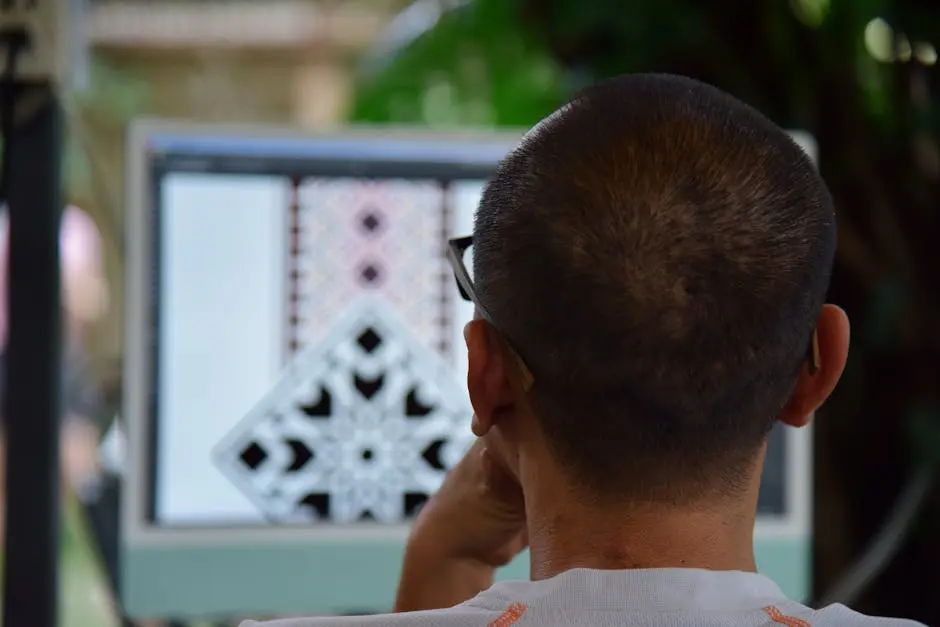Logo Design Tips for Enhanced Brand Recognition
Having a strong logo is essential for making a memorable impression. In a world saturated with brands, your logo can be the key differentiator that helps your business stand out. Let’s explore some effective logo design tips that can enhance your brand recognition and captivate your audience.
Understanding the Importance of a Well-Designed Logo
A well-designed logo serves as the face of your brand. It’s often the first point of contact with potential customers, making it crucial for establishing brand identity.
When potential customers encounter your logo, they form an impression that can influence their perceptions of your entire business. This initial perception can convert into brand loyalty, emphasizing the importance of a thoughtful design process. In essence, your logo embodies your brand’s essence and values, making it a critical component of your marketing strategy.
Moreover, a distinctive logo acts as a visual cue that triggers customers’ memories. It helps in creating a visual connection, making your brand not just recognizable, but also relatable. This connection is vital in a competitive market where brands compete for attention. By investing time in creating a sharp and meaningful logo, you’re investing in the longevity and profitability of your brand.
Simplicity is Key
A simple logo is more memorable. Think about iconic logos; their simplicity allows for easy recognition and versatility in application. The beauty of simplicity lies in its accessibility—your audience can quickly understand, recall, and relate to a simple design.
Consider the Nike swoosh or the Apple logo; these designs communicate their brands without unnecessary complexity. In contrast, a complicated logo can confuse potential customers, detracting from your message rather than enhancing it. When embarking on your logo design journey, always remember: less is often more.
While it’s tempting to incorporate multiple elements and colors, focusing on core design principles can lead to greater impact. The challenge lies in distilling your brand essence into its simplest form, a task that requires careful thought but pays dividends in brand recognition.
Choosing the Right Color Palette
Colors evoke emotions and convey messages. Selecting the right color palette that aligns with your brand values is vital for effective logo design. Each color carries its own psychological impact; for example, blue instills trust, while red evokes passion and energy.
When designing your logo, it’s essential to choose colors that resonate with your target audience. This alignment not only strengthens your brand’s image but also fosters a deeper connection with your consumers. Imagine a health brand using green to symbolize wellness and vitality—it’s a natural fit that enhances message clarity.
Additionally, keep in mind the principles of color harmony and contrast. Too many colors can overwhelm, while too few can make your logo forgettable. The best logos often find a sweet spot—a balanced palette that captivates the eye and reinforces the brand’s identity.
Typography Matters
The font you choose communicates personality and can influence how your brand is perceived. Therefore, selecting the perfect typography is crucial in logo design. A whimsical font might convey creativity, while a serif font may imply professionalism and heritage.
Equally important is the readability of your chosen typeface. No matter how clever your design, if potential customers struggle to read it, the effectiveness is lost. Therefore, as you explore various fonts, prioritize clarity alongside creativity.
Typography also offers opportunities for creative treatment. Tailoring the font to align with your brand story can create a truly unique expression of your identity. Whether you opt for bold letters that stand out or sleek fonts that suggest elegance, remember that typography plays a pivotal role in making a lasting impression.
Making it Scalable and Versatile
Your logo should look great at any size, whether on a business card or a billboard. Ensuring versatility is essential for different branding applications. A well-designed logo is adaptable; it can be simplified for tiny formats or detailed for larger displays.
This scalability is crucial in today’s digital age, where your logo will likely appear across various platforms—social media, websites, merchandise, and print materials. Each context has its specifications, and your logo needs to maintain integrity across all of them. A successful logo is one that captivates at first glance, regardless of scale.
Furthermore, test your logo’s performance in different settings. Does it hold up in monochrome? Is it easily identifiable in a crowded background? A versatile logo enhances brand recognition by ensuring consistent presentation across all consumer touchpoints.
Getting Feedback and Iterating
Don’t hesitate to seek feedback from others. Iterating based on constructive criticism can elevate your logo from good to great. Engaging with peers, potential customers, or even a focus group can provide valuable insights that you might overlook.
When gathering feedback, approach a diverse audience. Different perspectives can lead to significant enhancements in your design, helping you uncover any gaps in communication or appeal. Remember, your logo will represent your brand to the world—having a broad understanding of how it’s perceived is invaluable.
Once you’ve collected feedback, don’t shy away from making changes. The best logos have often undergone numerous iterations before finding their final form. Embrace the creative process, and see it as an opportunity to refine your vision.
Wrapping Up Your Logo Design Journey
By implementing these logo design tips, you can create a visual identity that not only stands out but also resonates with your target audience. Remember, a great logo is the first step in building a powerful brand that leaves a lasting impression.










